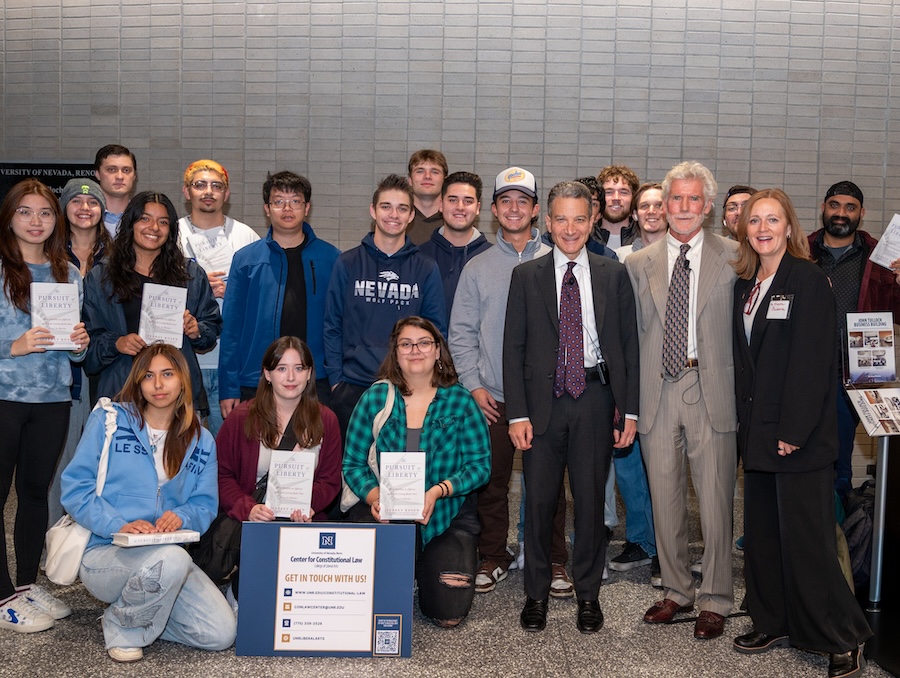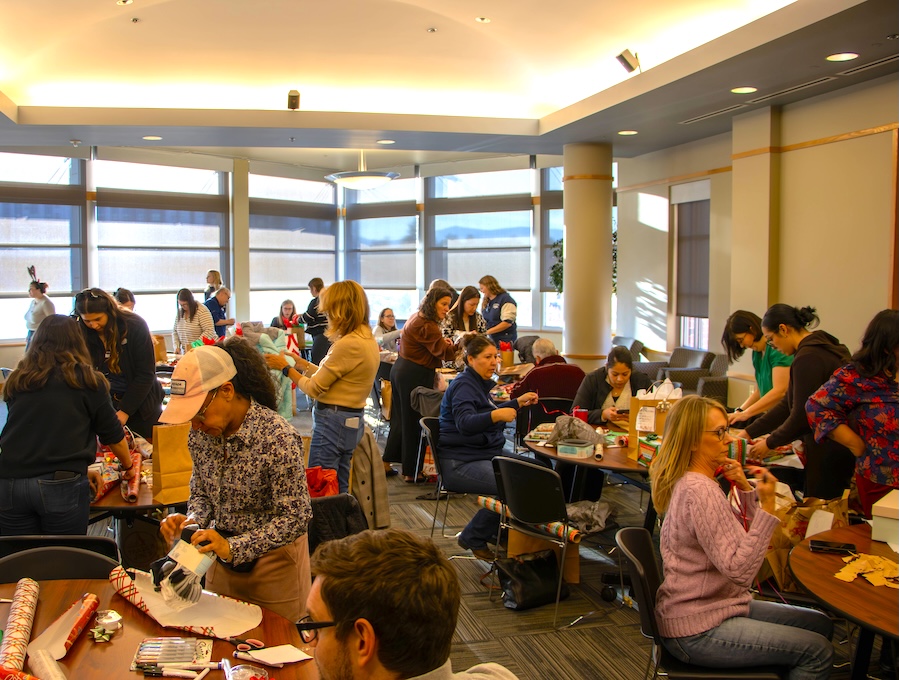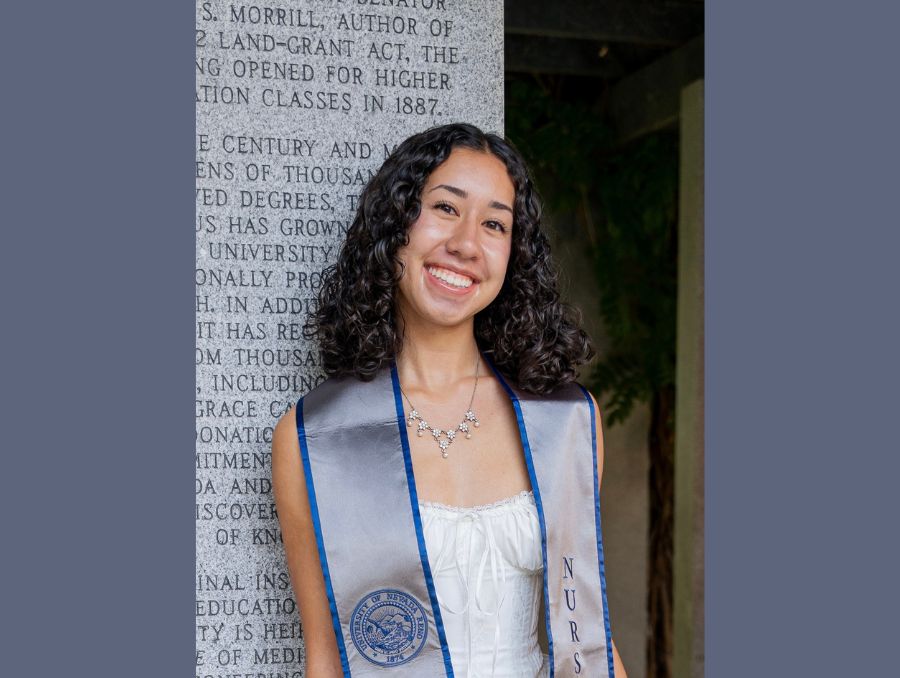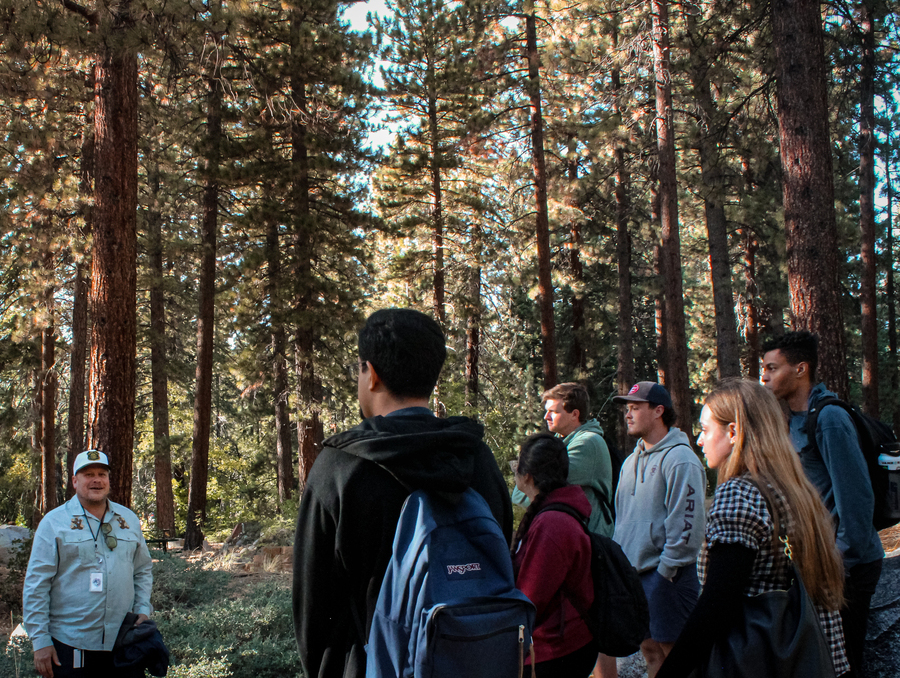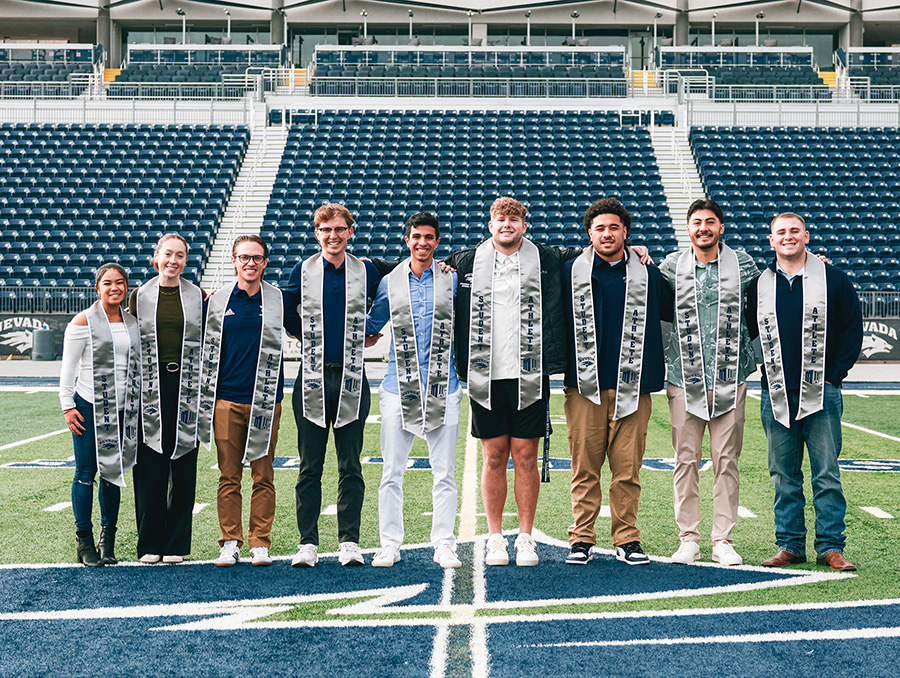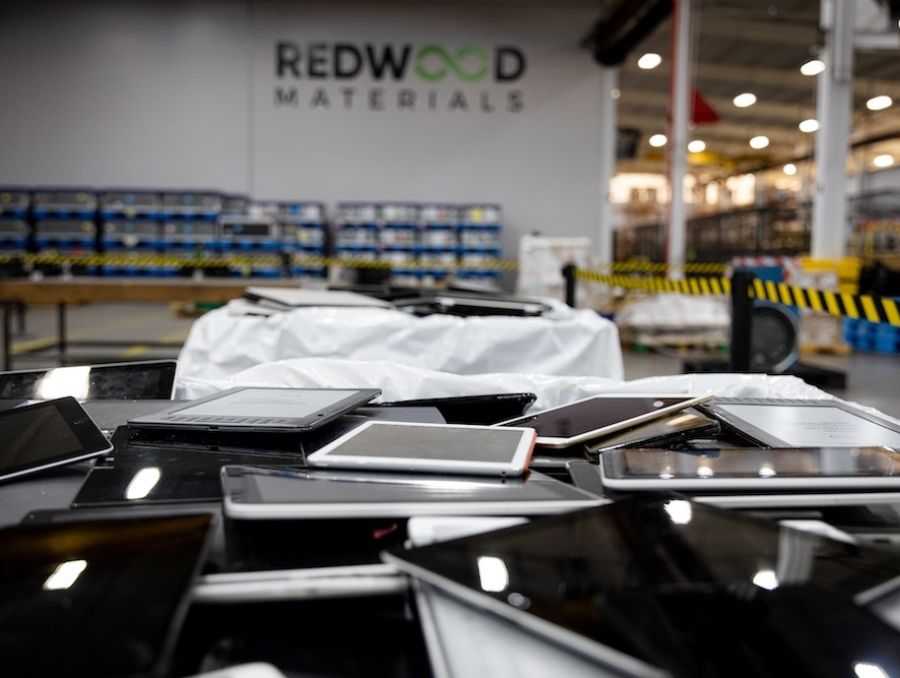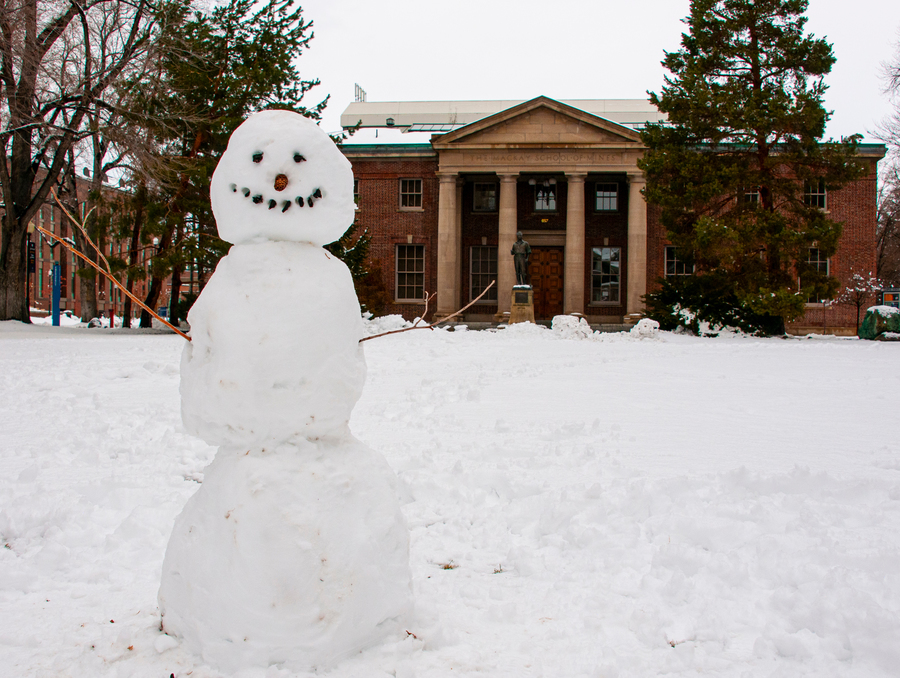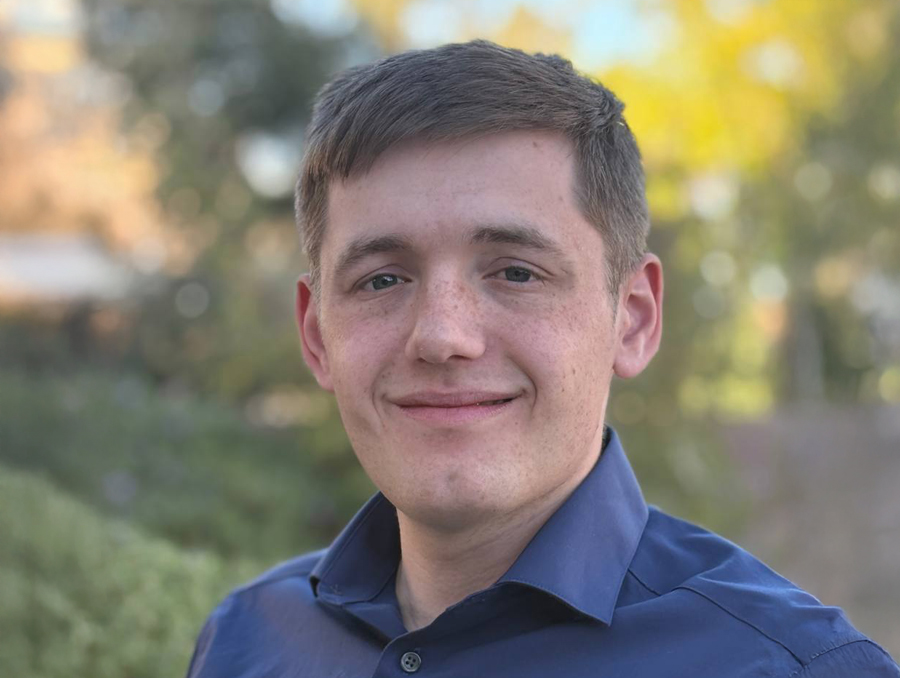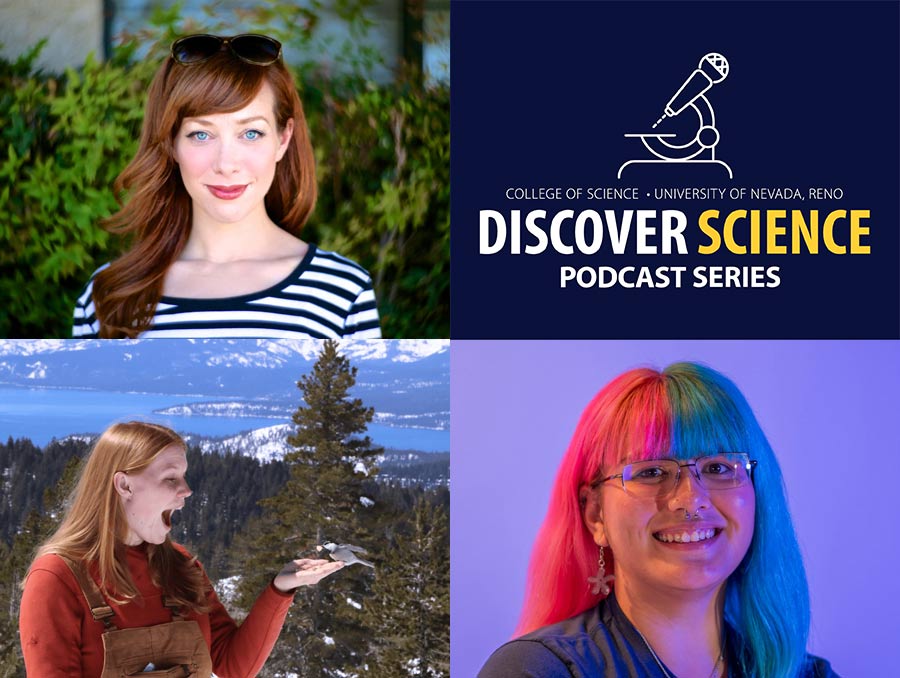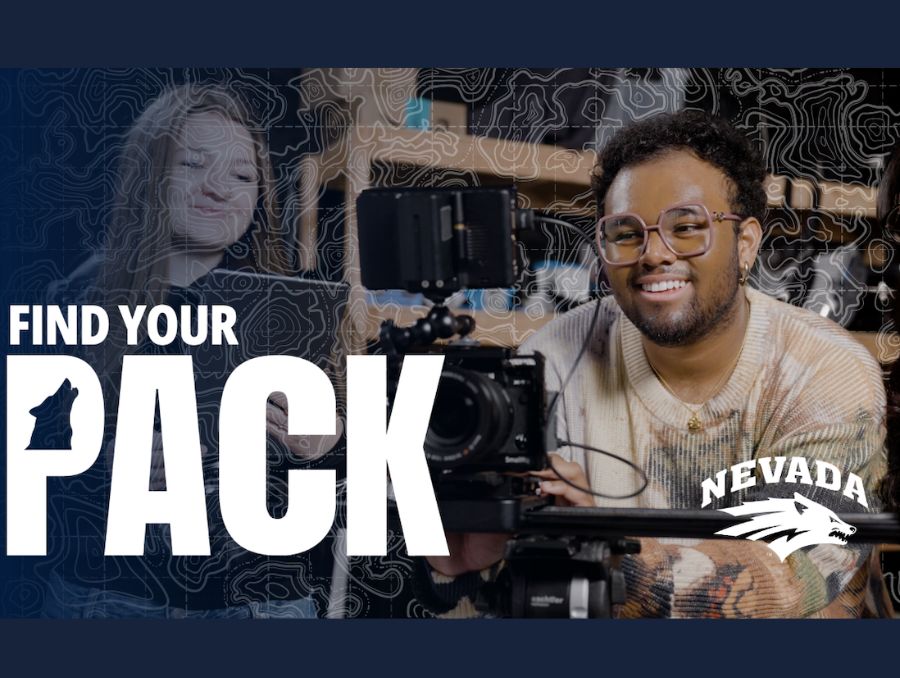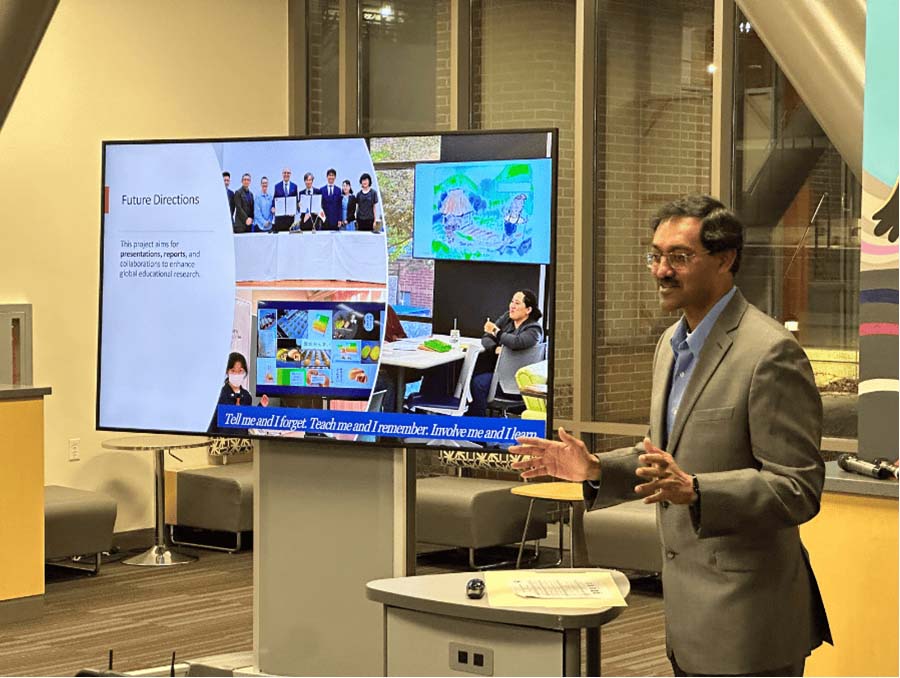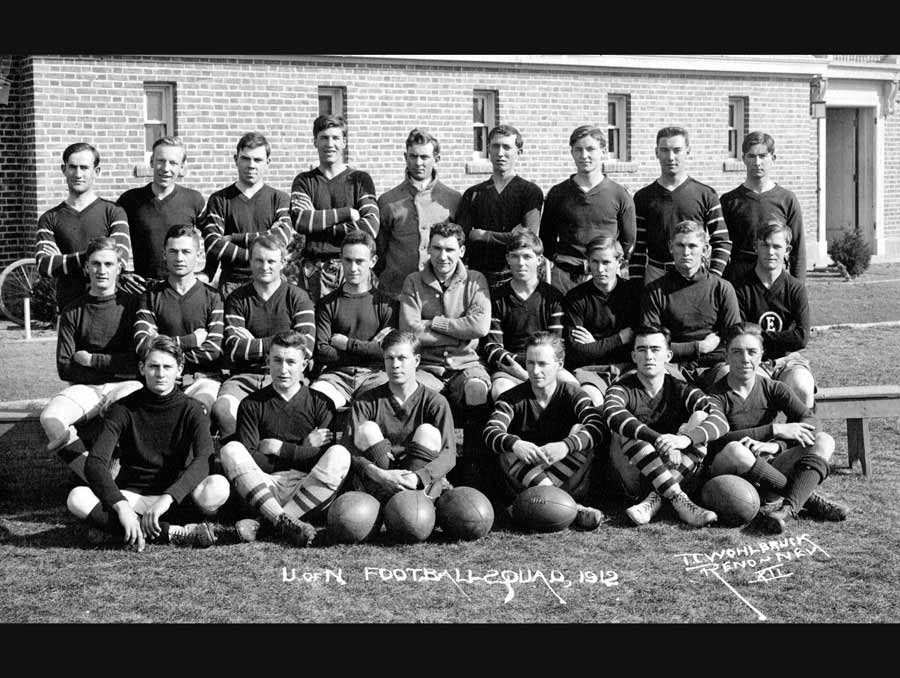Four years ago, when Nichole Joslyn first enrolled at the University of Nevada, Reno, she had given little, if any, thought to the concept of undergraduate research.
“No, I didn’t know much about it,” said Joslyn, who’s a graduate of Reed High School in Sparks.
She very quickly learned, however, that undergraduate research at the university has long been a point of emphasis and pride.
Now a member of the Student Ambassador program at Nevada, where undergraduates give tours of the campus to prospective students, Joslyn said undergraduate research has become one of her key talking points.
“A lot of times when the people come and I’m mingling with the prospective students, I’m always explaining to them, ‘We have a wonderful research program here at the university … the university is so supportive of you when you get involved with research, even if you’re only an undergraduate,’” she said.
Then Joslyn, a biochemistry and molecular biology major who will graduate in May and then will attend the University of Nevada School of Medicine in the fall, smiled: “A lot of other universities kind of look down at you regarding research: ‘You’re an undergraduate. You don’t really know what you’re doing.’
“But here at Nevada, they’ve always been so supportive of the work we’ve been doing.”
Nowhere was the evidence more clear than during the Nevada Undergraduate Research Symposium, held April 13-14 in the Joe Crowley Student Union. Joslyn and more than 50 other undergraduates spent the two days giving oral and poster presentations on an amazing array of research projects that ran the gamut from the hard sciences to photography and non-fiction writing.
“We had artists and computer scientists and biologists, all undergraduate researchers, all sitting through each other’s talks, being exposed to thoughts and concepts that I’m sure they’ve not been exposed to in the classes they’ve been taking,” said Mike Collopy, director of the university’s Office of Undergraduate Research.
Collopy, a veteran researcher himself who has either conducted or coordinated several important, complex multi-million-dollar grant-funded research projects, said the students impressed with their professionalism, solid science and ability to communicate in an engaging manner.
“The quality of the talks were as good as I’ve seen at any meeting I’ve been at in the last several years, and I told the students that,” he said. “Two of the students out of the art program are currently doing shows in town with their photography, and one of them is publishing a book. There are students who are already scheduled to go to graduate school.
“I think (undergraduate research) has really jump-started some careers. These are students who are really talented, really bright and really motivated. It was rejuvenating to me. It was a fun experience.”
Senior chemical and metallurgical engineering and biochemistry major Schinthia Islam couldn’t have agreed more.
Islam, from Reno, conducted a study on the reaction kinetics of three different types of biomass. The ultimate aim of such work, she explained, is to develop ways to make biomass a much more viable form of energy, one that could be produced on an industrial scale.
“It’s just a matter of making it more efficient, making the conversion from a petroleum-based energy society to one that relies more on unconventional sources, like biomass,” she said. “Making it more efficient is the most important thing right now.”
Islam, who will attend graduate school in pharmacology, said the symposium was both a bit frightening and fun.
“It’s been a little nerve-wracking,” she admitted. “This is actually my first time presenting a poster like this. I’m very excited. I had a lot of fun doing the poster. It’s been a very good experience. I know I’m going to be doing a lot more posters in the future, so this has really helped.”
Islam, whose faculty mentors were Charles Coronella and Victor Vasquez of the Department of Chemical and Metallurgical Engineering, said her project gave her a much greater awareness about a field of research she was not aware of originally.
“This was an experience that I’m thankful to have had,” she said. “It really helped me get familiar with a world that I didn’t really know all that much about. Until I started this project, I didn’t really know about biofuels. I always thought, ‘Biofuels? I should just keep buying regular gas.’
“Doing this project has really opened my eyes and really made me appreciate that there are so many other ways to deal with our energy crisis.”
Collopy said the Office of Undergraduate Research, which was one of the event’s co-sponsors, has made a concerted effort to support such learning. He said the Office of the Vice President for Research internally funds up to 40 undergraduate research projects each year.
“This creates opportunities for 40 students who wouldn’t otherwise have such an opportunity,” he said. “Think about that: over the period of 10 years, that’s 400 students who will benefit. These students are what the campus would call our best and brightest. They’re motivated, they’re hard-working and they’re successful. It adds a whole new dimension to the students’ experience while they’re at the university.”
Joslyn was emblematic of how undergraduate research seed money could pay off in meaningful ways.
She said the Undergraduate Research Symposium was her fourth time presenting original research. In addition to the undergraduate research support award she had received from the university, last summer she also received funding the National Science Foundation’s EPSCoR program.
“It’s really a cool thing,” she said of the support she’s received. “At the university you have the general undergrad, the honors undergrad support grants, and you have things like the NSF EPSCoR. So there’s a variety of different grants out there, and grants within grants. The variety is just tremendous. The great thing about our undergraduate research program at the university is that they’re always there to help. If you have any questions, their office is always open.”
Joslyn, whose research project was focused on creating both symmetrical and asymmetrical molecules, with the long-range hope that such work could lead to a new generation of solar conversion panels or flexible SIM cards, credited her faculty mentor, Sean Casey of the Department of Chemistry, with giving her the initial encouragement to follow a path of research.
“I was taking biophysical chemistry with Dr. Casey, and I had this huge connection with the physical chemistry, the surface chemistry, that we were learning,” she said. “I met him after class one day and told him I would be really interested in doing a project. That was almost two years ago. It’s kind of taken off since then.”
Joslyn said research has reaffirmed the strong initial connection she felt with chemistry.
“It’s just been so great,” she said. “I’ve realized that I really enjoy it, that I understand all the different mechanisms, all these incredible interactions that molecules can have. I’ve kind of grown a passion for it over time, and I’ve realized that’s where my connection was with science.”
Plus, Joslyn admitted, having an audience to share one’s work – such as those who attended her presentation during the Undergraduate Research Symposium – was a nice reward for all of her hard work.
“It’s stressful, but once you’re here and talking to people, it’s kind of cool to find people who are interested in what you’re doing,” she said.
In addition to the university’s Office of Undergraduate Research, the symposium was sponsored by the National Science Foundation EPSCoR program, Nevada System of Higher Education, and UNLV’s Center for Mathematics and Science Education.
